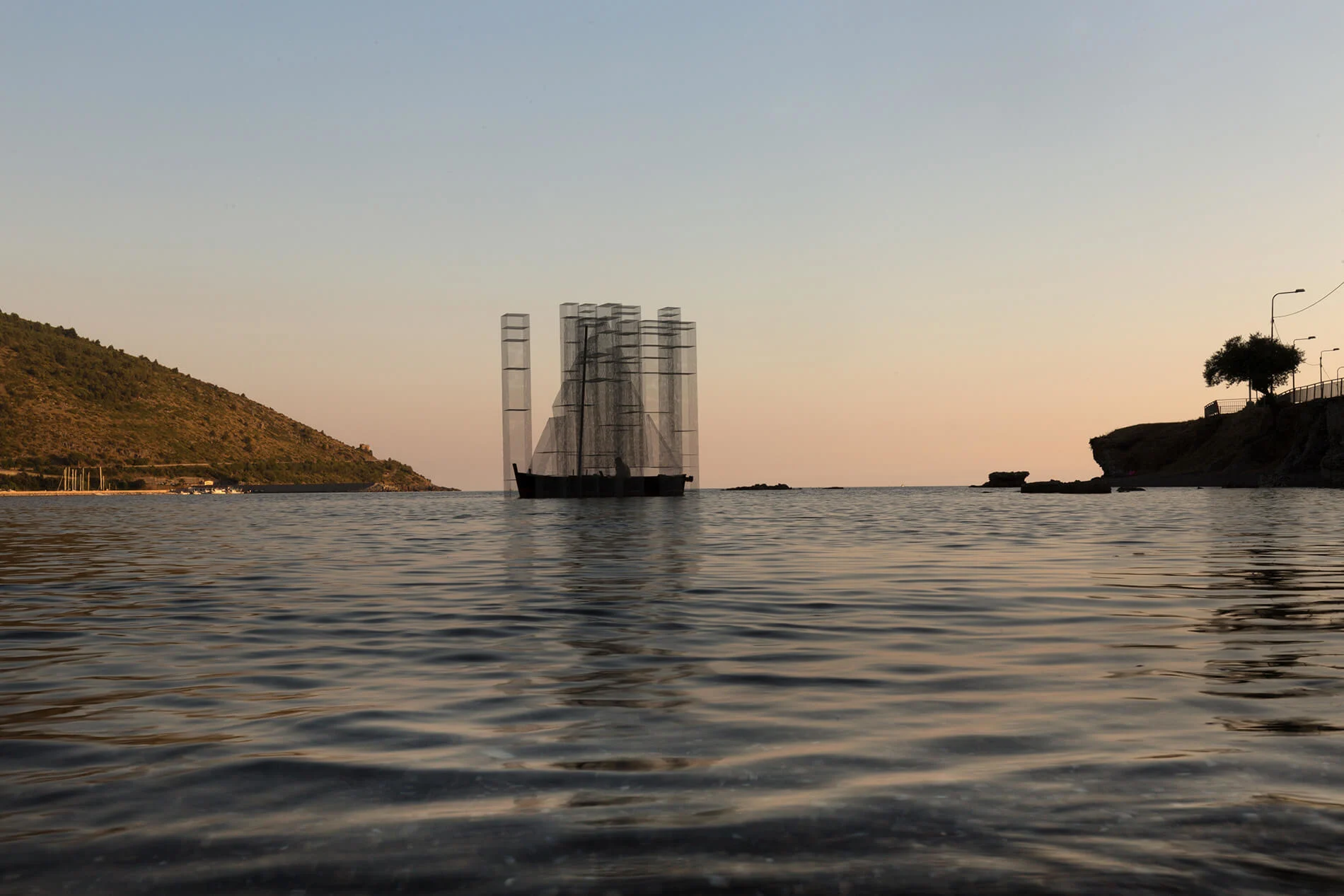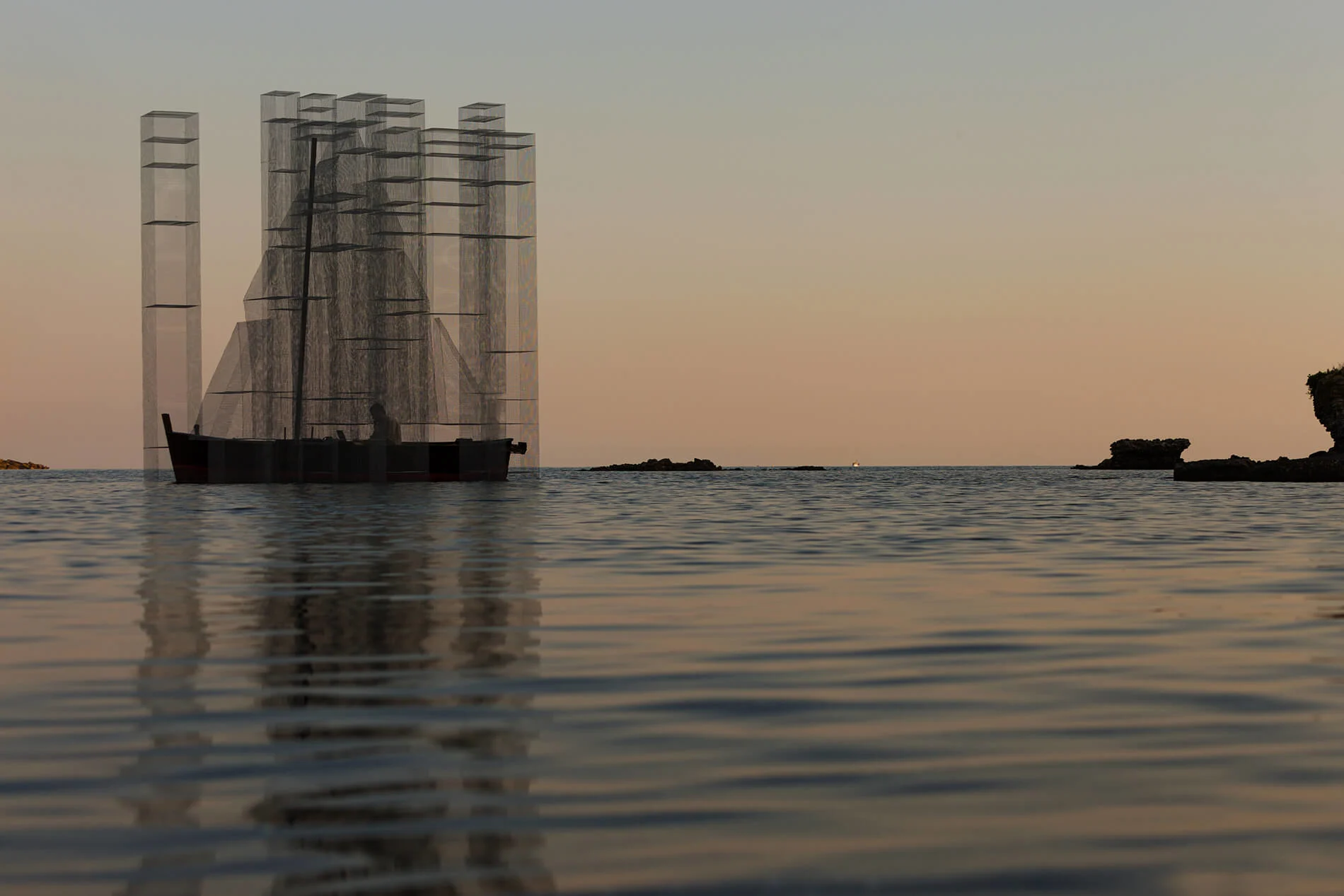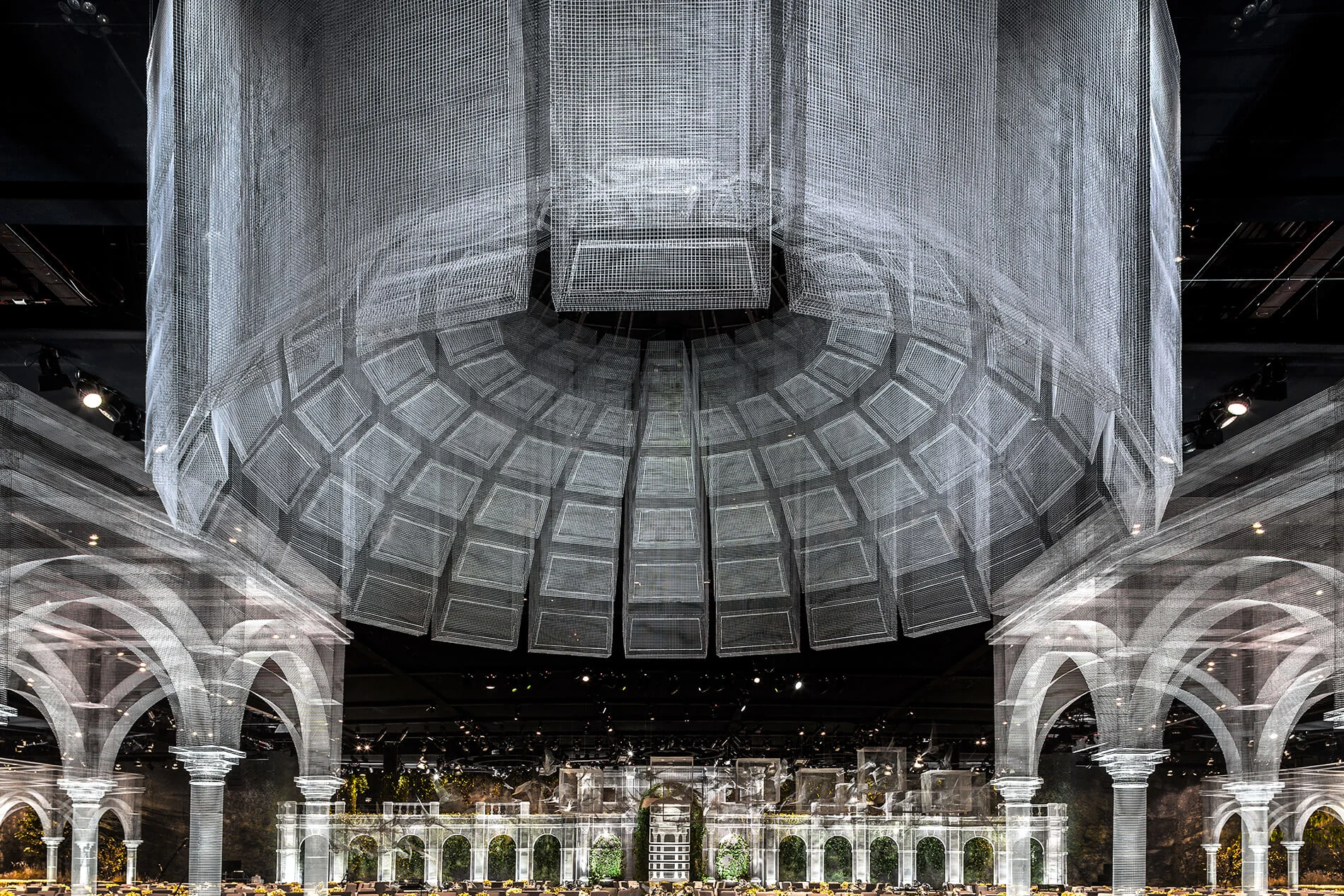
At 2018's Coachella, three majestic structures rose from the ground, towering over the festival goers below. Identical in design, each was larger than the next, ranging in size from three, to five, to seven stories tall. Inspired by heavy baroque and neoclassical architecture, the wire mesh, dome-like constructions looked straight to the sky. The visual spectacular was Etherea by installation artist Edoardo Tresoldi and it’s his biggest piece yet.
“Festivals are a very exciting public space for me,” Eduardo says. “The audience is waiting for the opening for months, and then they live the experience intensely and with curious eyes, aware of experiencing a unique and dense time that has neither a past nor a future.”
With Etherea, Edoardo says, “I wanted to create a sort of dedicated place where people could raise their head back and look at the sky, enjoying a simple and intimate moment while standing in the crowded environment of Coachella.”
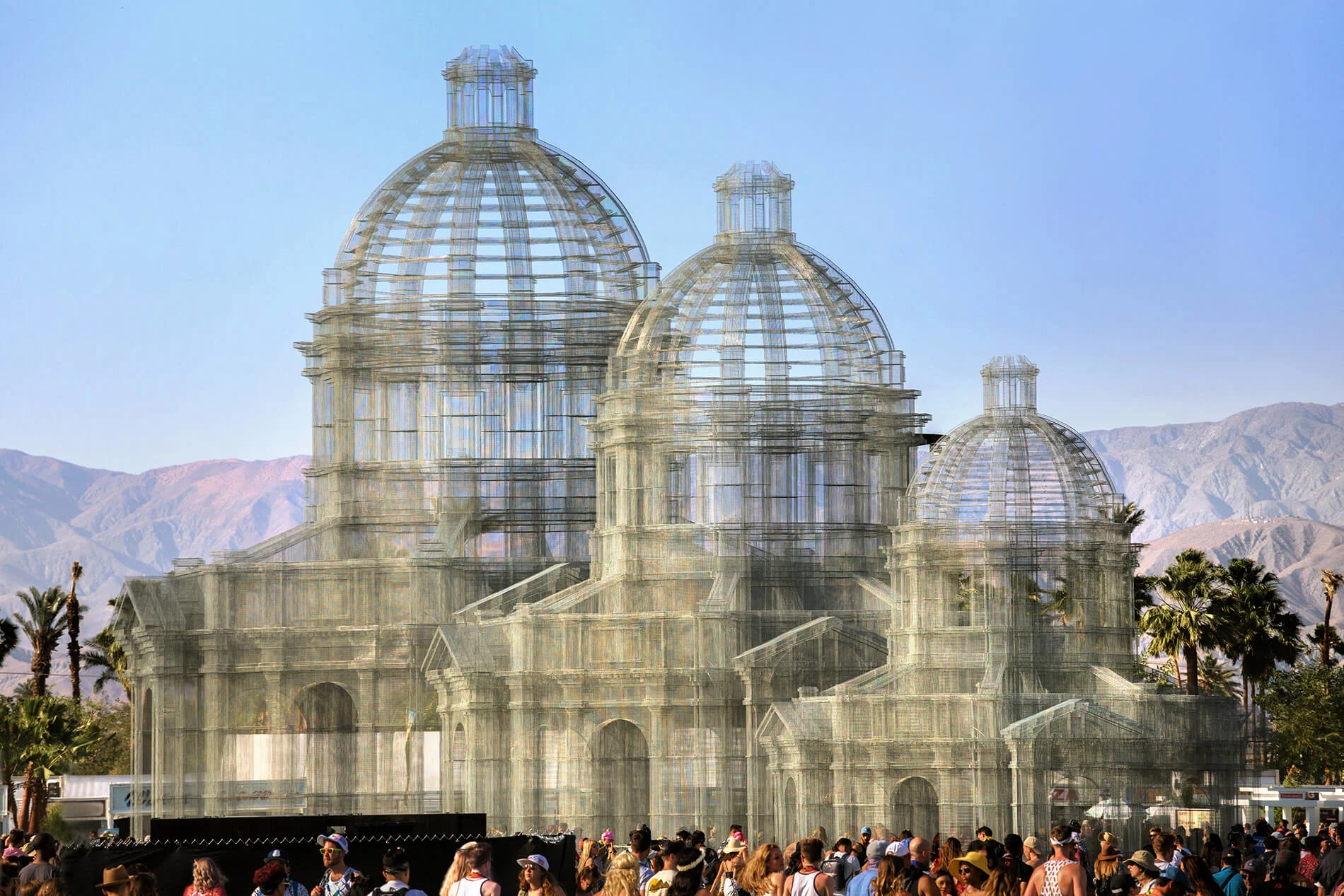
Moving through the three structures generated the optical illusion of moving closer to, or further away from the sky – growing taller or shrinking, like Alice in Wonderland. Edoardo likens it to the strange sensation when you revisit a house you grew up in and everything seems so much smaller.
Edoardo himself grew up in a small town in the Milanese suburbs called Cambiago. “It’s a place affected in the last decades by an intense urbanization,” he says. “Farm houses and countryside intertwine with highways, roundabouts and electricity pylons.”
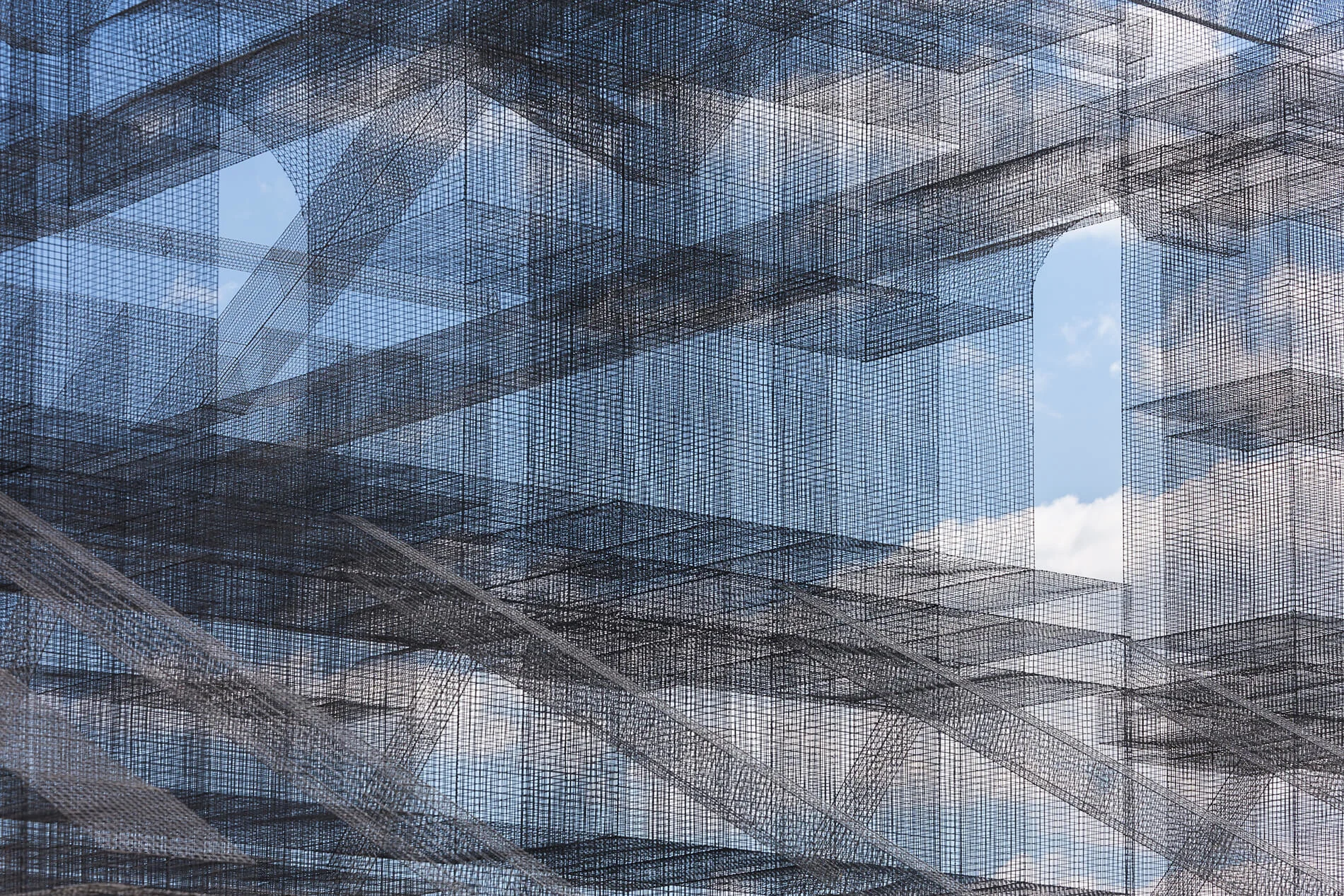
These strong contradictions are found in his work. As a European, and especially as an Italian, Edoardo is deeply influenced by classical Roman architecture. He lived in Rome for seven years. “Its architectural context immediately fascinated and influenced me,” he says. In his works he uses elements of ancient ruins in contrast with a more modernist style found in Italy – “It allows me to create a strong contemporary language."
It was while working as a set designer that Edoardo first became familiar with wire mesh. He has since become known for pushing the material to its limits, bending it and shaping it with his (gloved) hands to form large structures. These are assembled piece by piece by his team either in his Milan studio or on site, depending on the scale. The team perch on ladders, scaffolding or cherry-pickers depending on the height of the final piece.
It’s taxing physical work. A behind-the-scenes video of the making of one of his early works opens with a shot of Edoardo tearing off strips of band-aid to cover his cracked and bleeding fingers.
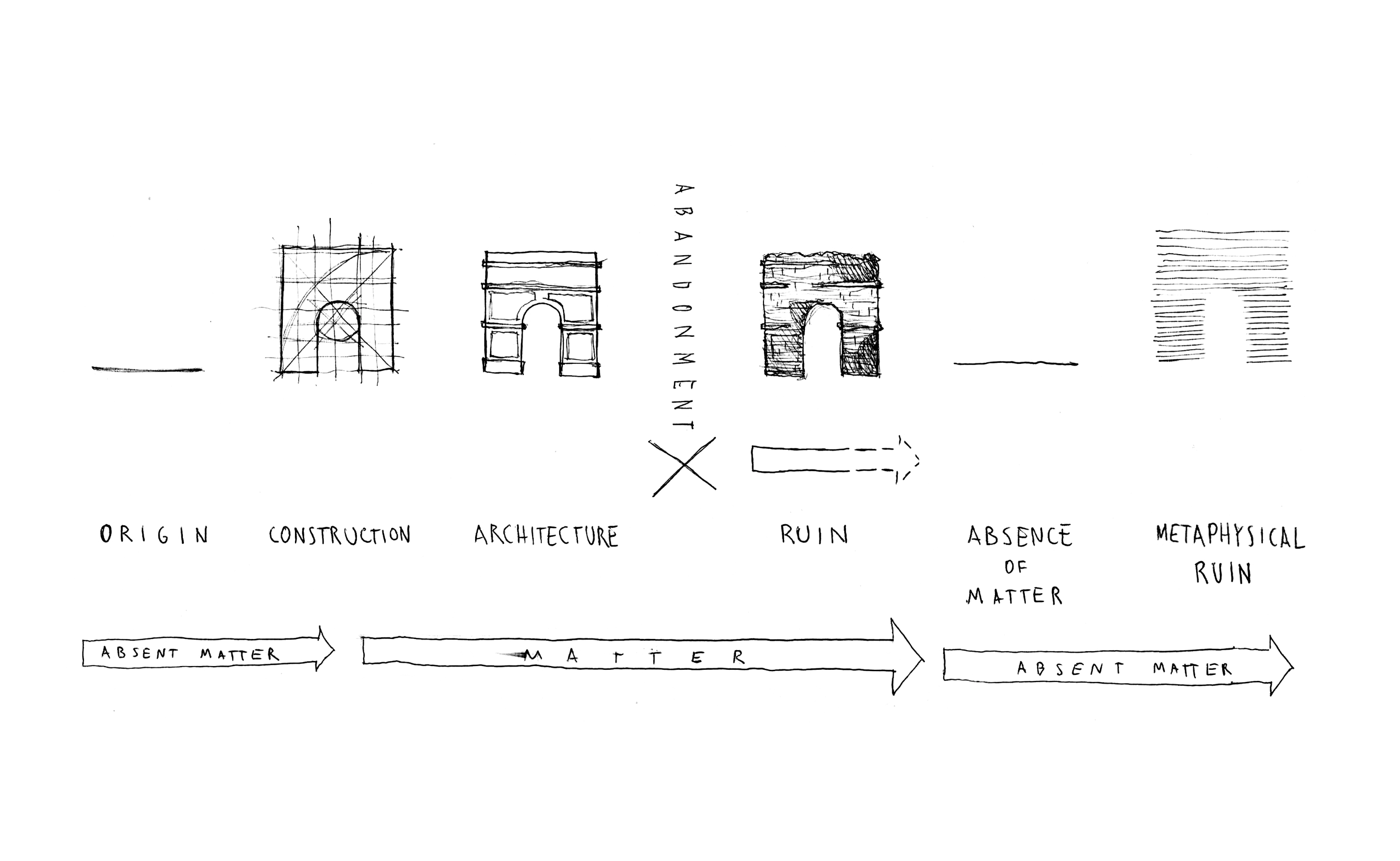
It’s the transparency of mesh wire that first attracted Edoardo – the ability to look through his structures and take in the surrounding area. The ephemeral and intangible qualities that the mesh is able to express he defines as Absent Matter. “It is a theme which would not have been considered in the design of a non-transparent intervention,” he says, “but for me it became a binding element, a part of the composition filtered through the veiled wire mesh.”
The transparent nature of Edoardo’s structures means that he has to be hyper-aware of their locations, and this is where he begins each piece. “I immerse myself in the place and try to ‘understand’ it,” he says. “Then I consider all physical, social and cultural dynamics: the material and immaterial components of the site become a fundamental part of the work.”
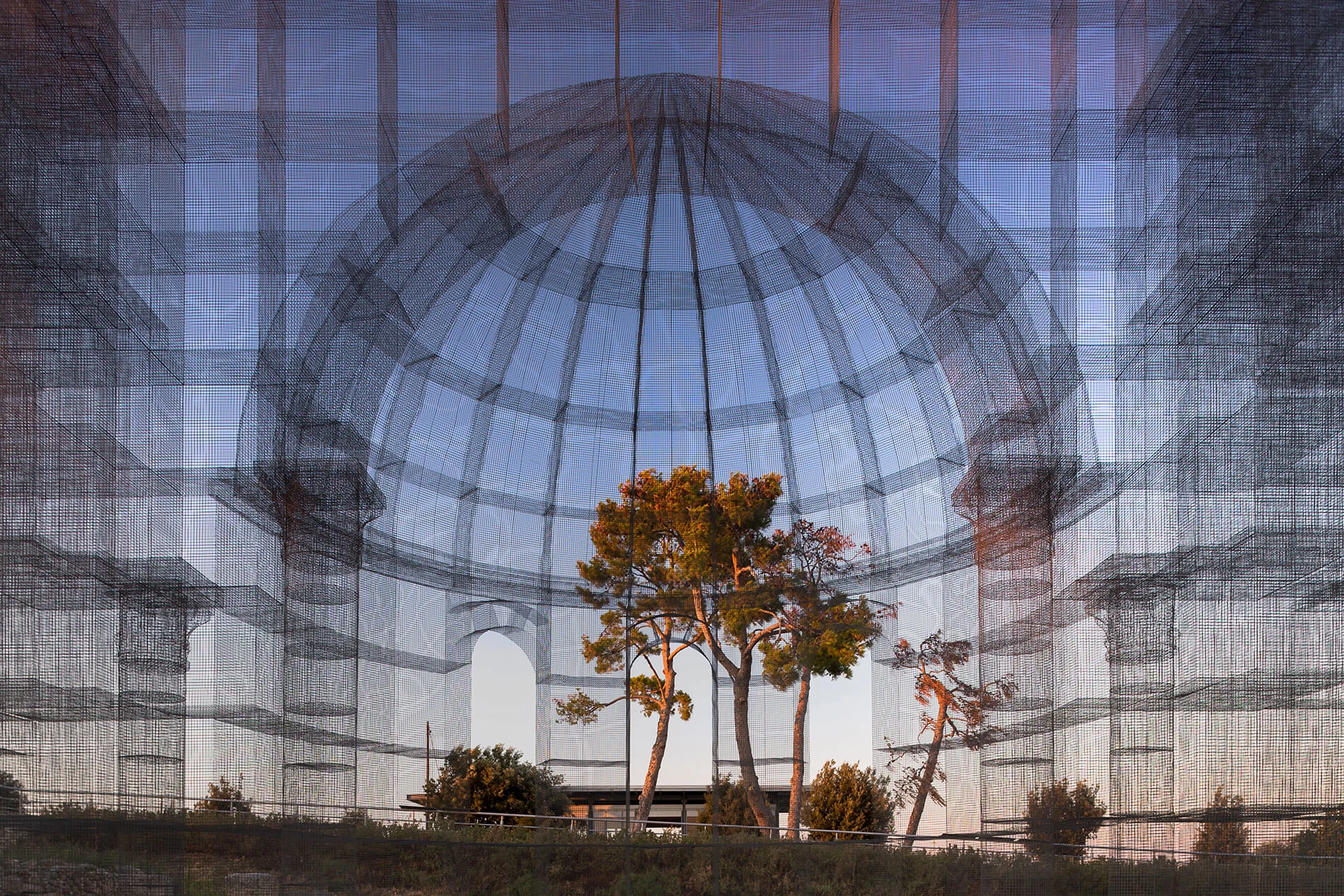
Where traditional architecture may exclude its setting, Edoardo’s pieces spark unexpected dialogues with their environment. With his work the Basilica di Siponto for example, “interesting relationships have been activated between the church and the tree behind the apse.”
In that work, Edoardo reconstructed the framework of a Christian church built between the 11th and 12th Centuries in Manfredonia, Italy, which was then abandoned after earthquakes struck the area in the 13th Century.
His works are like memories of the buildings they take inspiration from; the artwork is a ghost of the church that once stood there, resurrected in wire mesh. Its permanence is unusual for Edoardo, who’s pieces are often only temporary. Etherea existed for the two weekends of Coachella, and once the circus left town, it left with it.
